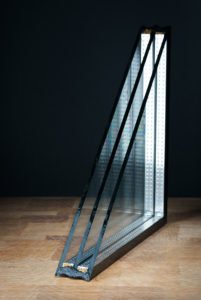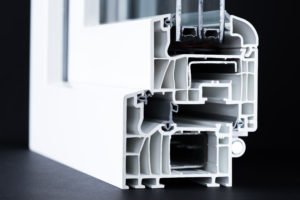A Guide To Energy Efficient Windows For Arizona Homeowners
A Guide To Energy Efficient Windows For Arizona Homeowners
According to the US Department of Energy (DoE), windows account for about 50% of the energy loss in a building or home, with single-glazed windows and clear glass being the biggest culprits. For this reason, if you live in an area that tends to be extremely hot in the summer and cold in the winter, such as the Arizona desert, you should install energy-efficient windows. Below is a brief history and the latest information about energy-efficient windows.
The Progression of Window Technology from Past to Present
Energy-efficient window technology has evolved considerably since the 1950s when Alastair Pilkington, technical director of British glass manufacturer Pilkington Brothers, invented a process of creating float glass, which was the flattest and most even glass at the time. This high-quality glass was a significant breakthrough in energy-efficient window technology because it made possible the application of window coatings. In fact, float glass is used in all windows today. The 1950s also saw the emergence of insulated glass (Thermopane), a technology that was originally patented in 1865. Designed to mimic the double glass liner of a Thermos bottle, the original version of the Thermopane consisted for two glass panes joined together with an air space between them. Over time, glass manufactures widened the space between the two panes to boost the energy efficiency of the glass. To prevent the structure from collapsing due to stress forces, glass manufactures use steel and rubber spacers to absorb expansion and contraction movement of the glass panes. By 2007, about 90% of all windows installed on residential and commercial buildings in the US had insulating glazing by 2007.
The 1980s produced the low-E glass as well as gas-filled IGUs. A low-E coating basically a thin layer of transparent metal that reflects light in or out of a room. Released in 1981, the first low-E coating contained a suspended film. Today, however, glass manufacturers simply deposit the coating on the glass, thereby reducing the cost of production. Additionally, glass manufacturers may fill the air space between panes with a low-conductivity gas, such as argon or krypton, to reduce heat loss by convection. As of 2005, over 50% of all windows contained a low-E coating.
One of the most notable inventions of the 2000s in this space is the dynamic glass, which is essentially a window glass that can switch from clear to opaque to control the amount of heat leaving or entering a room. This aspect differentiates it from a privacy glass, which has no energy-saving function.
How Energy Efficient Windows Can Lower Energy Costs
While windows provide a building with ventilation, warmth and light, they can have a negative impact on a building’s energy efficiency. Unfortunately, poor energy efficiency often means higher energy costs. Fortunately, you can cut your energy costs by either improving the energy efficiency of your existing home windows or replacing your windows with energy-efficient windows.
You can use various strategies to make your existing windows more energy efficient and improve the indoor comfort of your home. For instance, you can add storm windows to reduce air leakage and improve your indoor comfort. Secondly, you can use caulking and weather stripping to reduce air leakage around your windows. The former is ideal for stationary gaps, cracks or small joints (less than one-quarter inch wide), whereas the latter is ideal for operable windows and doors (building components that move). Thirdly, you can use energy-efficient window coverings and treatments to reduce heat gain in the summer and heat loss in winter. It is worth noting that window treatments and coverings are largely ineffective at reducing infiltration and air leakage.
In some case, it may be more cost-effective and practical to replace your old windows with new, energy-efficient windows. While the initial cost of installing new energy-efficient may be high, you will recoup your initial investment over time through lower cooling and heating costs. Some of the key factors to consider when choosing energy-efficient windows include the R-value, design and installation procedure.
Latest Technology Innovations in Energy Efficient Windows
Windows account to up to 50% of a building’s energy loss, says the DoE. For this reason, researchers in the field are constantly working to develop more energy efficient windows. For instance, the National Renewable Energy Laboratory (NREL) is currently developing an innovative insulation window film capable of reducing a building’s energy use by as much as 33%. Consisting of nano-to micrometer-sized vacuum capsules sturdy enough to be integrated with standard window plastics, the NREL’s vacuum insulation film can be applied like a typical low-emissivity (low-e) coating.
Early estimates from the NREL indicate that the thermal resistance of a millimeter thick layer of the vacuum insulation film is R-20. Put another way, the vacuum insulation film is as good as standard wall insulation. Besides reducing energy loss, the film also preserves the view and improves a building’s indoor comfort. Additionally, this new technology, which combines vacuum insulation materials and processes with low-emissivity plastic films, will improve the energy efficiency of the existing window retrofit technologies by as much as 80% without significantly increasing the cost of such technologies. It is worth noting that you can retrofit this vacuum insulation film onto your windows, which means you would not necessary need to undertake expensive repair or renovation projects in order to enjoy the benefits of this vacuum insulation film.
Considerations for Arizona Residents
If you live in Phoenix, AZ, you should install energy-efficient windows or upgrade to insulated glass windows as part of a renovation project. Such windows can help you lower your energy consumption, and ultimately, your energy costs. Your home should be designed with a balance between viewing the beauty of the desert from inside your home to the energy efficiency of the building envelope. To get a fee price quote on upgrading and replacing your windows, please contact us.




